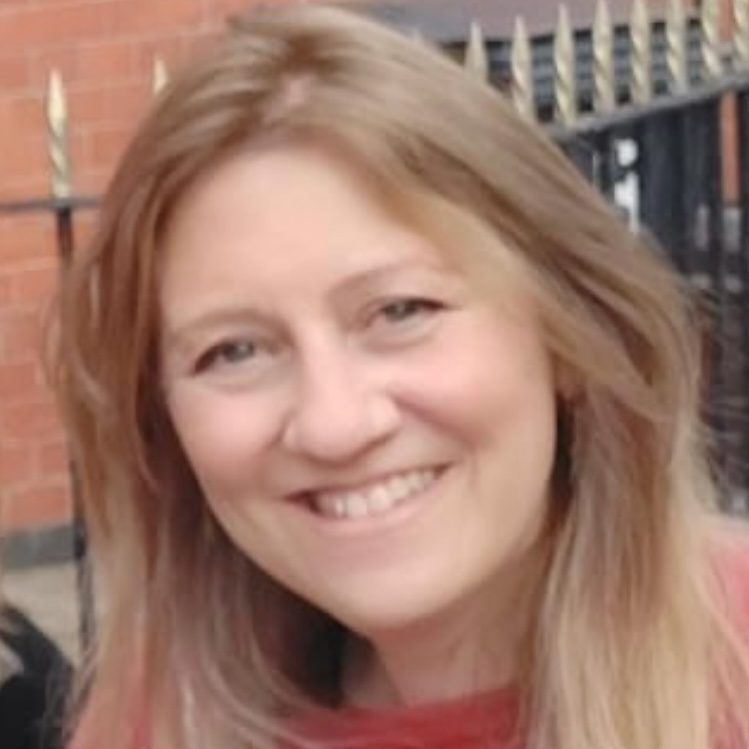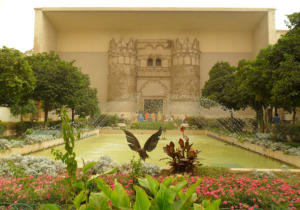Visiting the new 'Living Memory' exhibition at Yad Vashem Holocaust museum

In a new display at Israel’s Holocaust Museum, Yad Vashem, some 400 everyday objects like a wardrobe, a tree trunk, and a candelabra are on show, but these are not ordinary objects. Each piece holds an incredible story of survival and resilience.
The “Living Memory” exhibition was made open to the public two weeks ago and showcases a collection of Holocaust era artifacts, including personal items and artworks that testify to the horrors of the Nazi genocide.
“Many people ask me, as chairman of Yad Vashem, why we continue to search archives all over the world,” Dani Dayan told those gathered for the opening of the exhibition. “Every single page that mentions a person – a Jew – has importance, and we are forbidden to give it up,” he stressed.
“What we have created here, 'Living Memory', is not merely an exhibition of objects, nor just a collection of items. This exhibition, in my eyes, is much more than that: it is about the building of memory through these very objects,” Dayan explained.
“Artifacts, documents, photographs and artworks, each one bearing witness to a world that no longer exists, and telling a story about people, families and entire communities,” reads the explanation of the exhibition, describing the collection of pieces as a “creation of a visual language that has become an integral part of our collective memory.”
Now that we are 80 years on from the end of World War II, there are very few living eyewitnesses left to tell the tale. This makes the task of preserving the memories and honoring the survivors’ legacy all the more important.
The opening ceremony included a musical performance conducted by Auschwitz survivor, Lazlo Roth, who is now 105 years old. ALL ISRAEL NEWS correspondent, Oriel Moran, attended the ceremony and described the experience as “a true testament of the millions of the Jewish people to survive the most cruel crimes against humanity and still stand today to tell their story through the art of music.”
“You are an inspiration in my eyes,” she told Roth. “It might feel like you’re just being yourself – but for us, you’re a symbol of the hope we all long for,” she said.
Roth responded with kind wishes, saying, “I wish everyone good health. And the main thing is to be happy that we’ve reached a certain political situation – at least for now, it’s calm. Let’s hope it stays that way.”
Moran highlighted the stories behind some of the apparently ordinary pieces on display.
“On a normal day, a tree trunk would not be any place in which you would think that would hide you, or save your life,” Moran begins, “but Jacob Silverson, who escaped the March of Death when he was only 20 years old. He was escaping from the Nazis and he saw a rabbit running into one of these slits in the tree,” she explained. “He hid here for hours, hiding from the Nazis, and that’s how he survived. It's just incredible the resilience that people like Jacob had."
An ordinary looking wardrobe stands beside the wall in another part of the exhibition, but the story behind it is anything but ordinary. “During the war, Jania Schneider hid in the house of her friend Barbara in this closet. Barbara's mother, Sophia, hid her inside,” Moran explains, before showing the hole where a Nazi soldier stabbed through the locked wardrobe door, after being told the key was missing. Mercifully, Schneider survived.
A candelabra made from concentration camp barbed wire, some of Schindler’s actual lists, the fingerprint record of Adolf Eichmann and a stack of yellow star patches are also on display, each object holding a world of meaning.
An art piece by Samuel Beck, survivor of the Vilna ghetto, is also featured in the exhibition. It shows broken pieces of the Ten Commandments, especially the commandment not to murder, riddled with bullet holes. “His family was murdered by these bullet holes. They basically shot his family to death,” Moran explains. “The fabric of humanity was completely shattered, and you can see him express that here."
Rabbi Lau also shared his appreciation for the exhibition and its significance. “Here, tens of thousands of students from all generations and ages, from all countries – they will come, learn, know: “There was once a family, this was their story, this is their memory, this is their background.” From which city they came, and where they went. Despite everything – it was all real, alive, personal, vibrant, true,” he said.
“This cannot be denied. You cannot deny it. Today, people try to deny – terrible antisemitism. Today, even in the United States, our greatest friend, the number of antisemites is countless, untraceable. But against all that will stand the photographs, the memories – the history of Yad Vashem and the history of the living museum that exists here – to remind us of the past and the future,” he added.
In the face of so many who are now denying the scale of the Holocaust and even its reality, Yad Vashem has recently been able to confirm over five million actual names of those who perished at the hands of the Nazis following years of work to identify the victims. Now, with fewer and fewer living survivors, the truth of what happened must be carefully documented. As Elie Wiesel said, "We have to be the messengers' messengers."
Shortly before she died in the Holocaust, artist Gela Seckstein wrote, “Knowing that I will not survive, I donate my works to a Jewish museum that will be established after the war. Do not allow such destruction to happen again.”
Medy Shvide affirms the importance of Seckstein’s determination and the exhibition’s desire to fulfill her request, saying,
“Seckstein’s words are not only a testament, they are a vision. A vision of a museum, a place where her creation will speak even when her voice was silenced. This exhibition, in many ways, is the response to that testament – it is living memory.”
The exhibition, curated by Eliad Moreh-Rosenberg and Rinat Harris-Pavis, opened on Oct. 30, and is displayed in the Exhibitions Pavilion at Yad Vashem in Jerusalem.

Jo Elizabeth has a great interest in politics and cultural developments, studying Social Policy for her first degree and gaining a Masters in Jewish Philosophy from Haifa University, but she loves to write about the Bible and its primary subject, the God of Israel. As a writer, Jo spends her time between the UK and Jerusalem, Israel.
You might also like to read this:

















